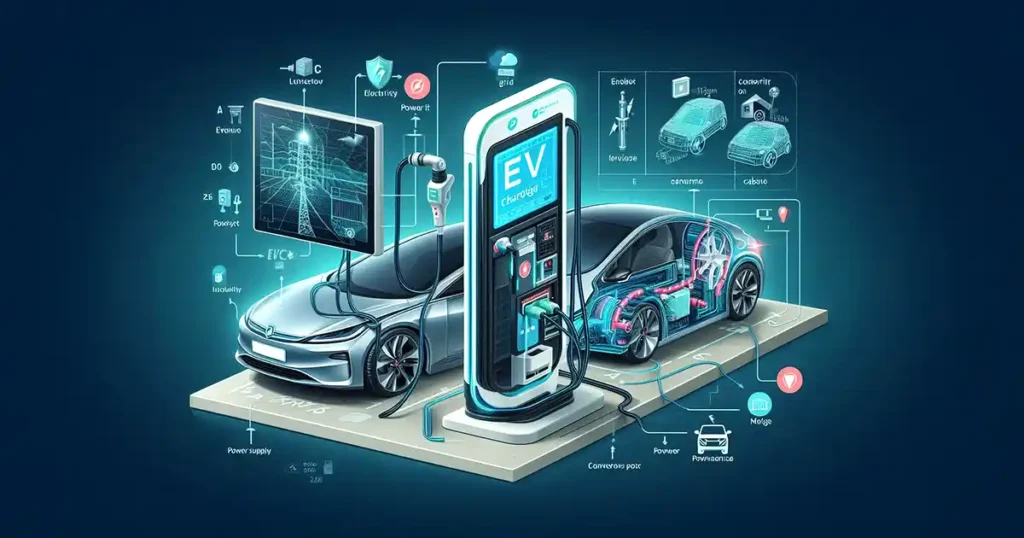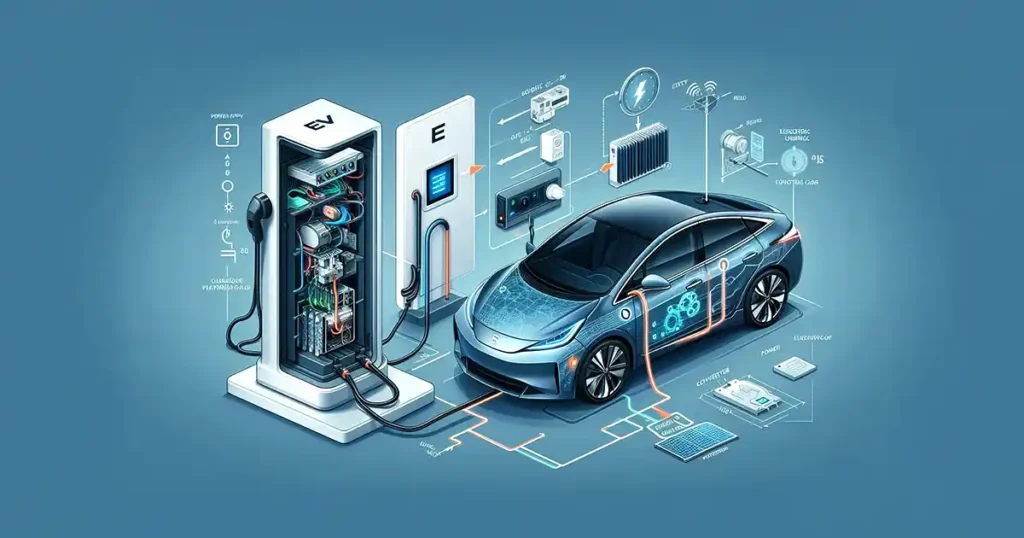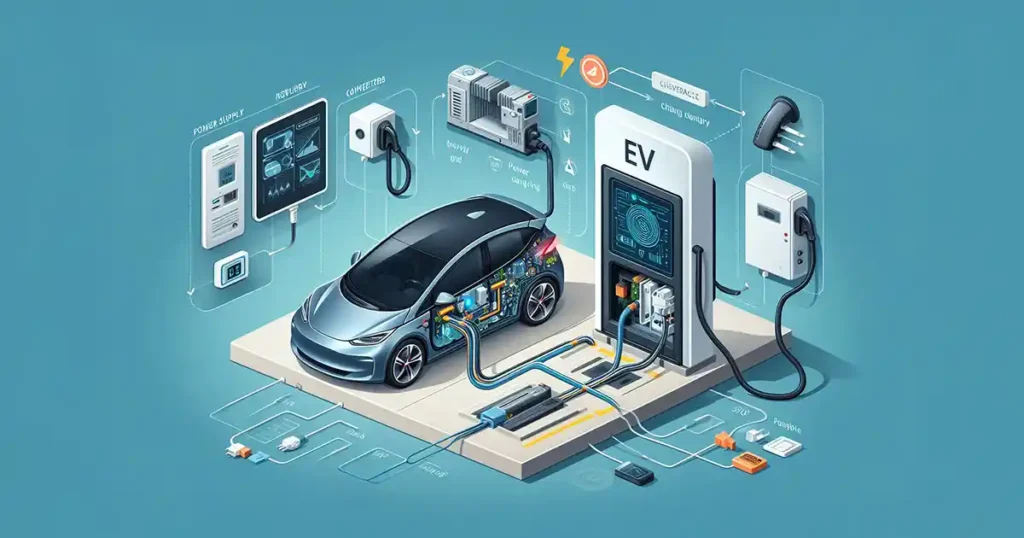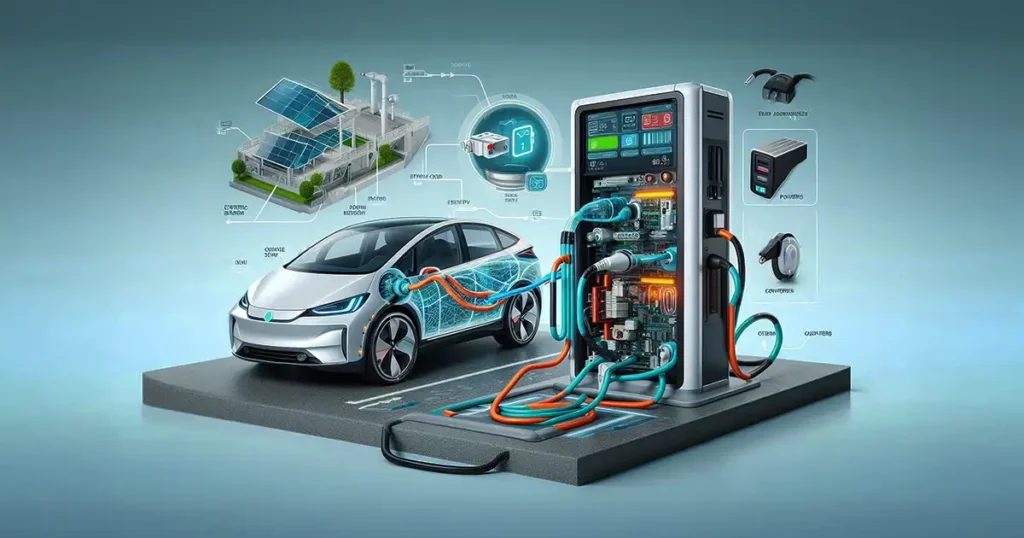The rise of electric vehicles (EVs) has brought a surge in demand for charging infrastructure. Understanding how EV charging stations work is crucial for both EV owners and those interested in the future of transportation. This guide provides a comprehensive overview of the technology behind EV charging, from basic principles to the latest advancements.
Types of EV Charging Stations

EV charging stations come in various types, each with its own charging speed and power capacity:
- Level 1 Charging:
- Slowest charging method.
- Uses a standard 120V household outlet (similar to what’s used for appliances).
- Charges at a rate of around 3 to 5 miles of range per hour.
- Ideal for overnight charging at home.
- Level 2 Charging:
- Most common type of charging station.
- Uses a 240V outlet, similar to what’s used for electric dryers.
- Charges at a rate of 12 to 30 miles of range per hour.
- Suitable for home or workplace charging.
- DC Fast Charging (DCFC):
- Fastest charging method.
- Uses direct current (DC) power to charge the EV battery.
- Charges at a rate of 50 to 350+ miles of range per hour.
- Ideal for long-distance travel and public charging locations.
- Requires a CCS (Combined Charging System) or CHAdeMO connector.
How EV Charging Stations Work: The Basics

- Power Supply:
- The charging station receives power from the electrical grid.
- The power is then converted into the appropriate voltage and current for the EV.
- Communication Protocol:
- The charging station communicates with the EV using a communication protocol.
- This protocol ensures safe and efficient charging by verifying compatibility and managing the charging process.
- Charging Cable:
- The charging cable connects the charging station to the EV.
- Different types of charging cables are used for different charging levels and connectors.
- Charging Process:
- Once connected, the charging station delivers power to the EV battery.
- The charging process can take anywhere from a few minutes to several hours, depending on the charging speed and battery capacity.
Components of an EV Charging Station

- Power Electronics:
- Converts the incoming AC power from the grid into the appropriate DC power for the EV battery.
- Includes components like rectifiers, filters, and DC-DC converters.
- Control Unit:
- Manages the charging process, monitors the charging status, and communicates with the EV.
- Includes sensors, microcontrollers, and communication interfaces.
- Connector:
- The physical interface that connects the charging cable to the EV.
- Different connectors are used for different charging levels and standards.
- Meter:
- Tracks the amount of energy delivered to the EV.
- Used for billing and energy management purposes.
- Enclosure:
- Protects the internal components of the charging station from the elements.
- Provides a safe and secure environment for charging.
EV Charging Standards and Connectors
Several charging standards and connectors are in use around the world, including:
- CCS (Combined Charging System): A popular standard in Europe and North America.
- CHAdeMO: A Japanese standard.
- GB/T: A Chinese standard.
- Tesla Connector: Used exclusively for Tesla vehicles.
Home Charging vs. Public Charging
- Home Charging:
- Offers the convenience of charging overnight or during off-peak hours.
- Typically uses Level 1 or Level 2 charging.
- Requires installation of a dedicated charging station at home.
- Public Charging:
- Available at various locations, such as shopping malls, restaurants, and highway rest stops.
- Offers varying levels of charging speeds, from Level 2 to DC Fast Charging.
- Requires a subscription or payment per use.
The Future of EV Charging
The future of EV charging is bright, with ongoing advancements in technology and infrastructure. Some key trends include:
- Increased Charging Speeds: Faster charging speeds will enable quicker charging times, making EV ownership more convenient.
- Smart Charging: Smart charging technologies will optimize charging times and costs by utilizing off-peak electricity rates and grid demand.
- Wireless Charging: Wireless charging technology is being developed, which could eliminate the need for physical cables.
- Expanded Charging Infrastructure: The number of public charging stations is expected to grow significantly in the coming years, making EV charging more accessible.
Benefits of EV Charging Stations
- Reduced Emissions: EVs produce significantly fewer emissions than gasoline-powered vehicles, contributing to cleaner air and a healthier environment.
- Reduced Dependence on Fossil Fuels: EVs reduce reliance on fossil fuels, promoting energy independence and reducing greenhouse gas emissions.
- Increased Energy Efficiency: EVs are more energy-efficient than gasoline-powered vehicles, resulting in lower operating costs.
- Improved Air Quality: EVs produce zero tailpipe emissions, improving air quality in urban areas.
Challenges and Considerations
- Charging Infrastructure Development: Expanding the charging infrastructure is crucial to meet the growing demand for EVs.
- Grid Capacity: The increasing number of EVs will put a strain on the electricity grid, requiring upgrades and investments in grid infrastructure.
- Charging Costs: The cost of public charging can vary significantly, and the availability of affordable charging options is crucial for widespread EV adoption.
- Charging Time: While DC Fast Charging offers fast charging speeds, it still takes longer to charge an EV than to fill up a gasoline tank.
Conclusion
EV charging stations play a vital role in the transition to a sustainable transportation future. By understanding how they work and the various factors involved, we can make informed decisions about EV ownership and contribute to the growth of the EV market. As technology continues to advance and infrastructure expands, EV charging is poised to become more convenient, accessible, and efficient for everyone.






